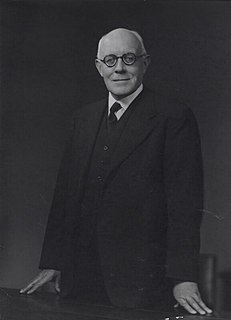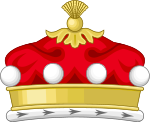
Earl of Longford is a title that has been created twice in the Peerage of Ireland.

Earl Grey is a title in the peerage of the United Kingdom. It was created in 1806 for General Charles Grey, 1st Baron Grey. In 1801, he was given the title Baron Grey of Howick in the County of Northumberland, and in 1806 he was given Viscount Howick in the County of Northumberland, at the same time as he was given the earldom. A member of the prominent Grey family of Northumberland, Earl Grey was the third son of Sir Henry Grey, 1st Baronet of Howick.

Marquess of Headfort is a title in the Peerage of Ireland. It was created in 1800 for Thomas Taylour, 2nd Earl of Bective.

Earl Cadogan is a title that has been created twice in the Peerage of Great Britain for the Cadogan family. The second creation, in 1800, was for Charles Cadogan, 3rd Baron Cadogan.

Earl of Limerick is a title that has been created twice in the Peerage of Ireland, associated first with the Dongan family, then with the Pery family.

Earl of Iddesleigh, in the County of Devon, is a title in the Peerage of the United Kingdom. It was created in 1885 for the Conservative politician Sir Stafford Northcote, 8th Baronet, of Pynes in the parish of Upton Pyne near Exeter in Devon and lord of the manor of Iddesleigh, 28 miles north-west of Pynes. He served as President of the Board of Trade, Secretary of State for India, Chancellor of the Exchequer, First Lord of the Treasury and Foreign Secretary and was Joint Leader of the Conservative Party from 1881 to 1885. Northcote was made Viscount St Cyres, of Newton Saint Cyres in the County of Devon, at the same time he was given the earldom. This title is also in the Peerage of the United Kingdom.

Earl of Lytton, in the County of Derby, is a title in the Peerage of the United Kingdom. It was created in 1880 for the diplomat and poet Robert Bulwer-Lytton, 2nd Baron Lytton. He was Viceroy of India from 1876 to 1880 and British Ambassador to France from 1887 to 1891. He was made Viscount Knebworth, of Knebworth in the County of Hertford, at the same time he was given the earldom, also in the Peerage of the United Kingdom.

Earl of Cromer is a title in the Peerage of the United Kingdom, held by members of the Baring family, of German descent. It was created for Evelyn Baring, 1st Viscount Cromer, long time British Consul-General in Egypt. He had already been created Baron Cromer, of Cromer in the County of Norfolk, in 1892, Viscount Cromer, of Cromer in the County of Norfolk, in 1899, and was made Viscount Errington, of Hexham in the County of Northumberland, and Earl of Cromer, in the County of Norfolk, on 8 August 1901. These titles are also in the Peerage of the United Kingdom. A member of the influential Baring banking family, Lord Cromer was the son of Henry Baring, third son of Sir Francis Baring, 1st Baronet. He was succeeded by his son, the second Earl, a diplomat and civil servant. His son, the third Earl, was also a diplomat and served as British Ambassador to the United States between 1971 and 1974. In 2010 the titles are held by the latter's son, the fourth Earl, who succeeded in 1991.

Baron Harris, of Seringapatam and Mysore in the East Indies and of Belmont in the County of Kent, is a title in the Peerage of the United Kingdom.
Baron Gainford, of Headlam in the County Palatine of Durham, is a title in the Peerage of the United Kingdom. It was created on 3 January 1917 for the Liberal politician Jack Pease, a member of the Darlington Pease family. He notably served as President of the Board of Education from 1911 to 1915. Pease was the second son of Sir Joseph Pease, 1st Baronet, and the grandson of Joseph Pease, while Arthur Pease was his uncle and Sir Arthur Pease, 1st Baronet, Beaumont Pease, 1st Baron Wardington, and Herbert Pease, 1st Baron Daryngton, were his first cousins. The third baron was a former member of the London County Council and of the Greater London Council. As of 2013 the title is held by his younger brother, the fourth baron, an architect and town planner; County Planning Officer for Ross and Cromarty 1967–1975 and Scottish Office Inquiry Reporter 1978–1993.

Baron Killanin, of Galway in the County of Galway, is a title in the Peerage of the United Kingdom. It was created in 1900 for the Irish lawyer and politician Michael Morris, Baron Morris, Lord Chief Justice of Ireland from 1887 to 1889 and a Lord of Appeal in Ordinary from 1889 to 1900. He had already been created a Baronet in the Baronetage of the United Kingdom in 1885, and a life peer under the Appellate Jurisdiction Act 1876 as Baron Morris, of Spiddal in the County of Galway, in 1889. On his death in 1901 the life peerage became extinct while he was succeeded in the baronetcy and hereditary barony by his eldest son, the second Baron. He briefly represented Galway Borough in the House of Commons as a Conservative and also served as Lord Lieutenant of County Galway from 1918 to 1922. He was succeeded by his nephew, the third Baron, the son of George Henry Morris. He was a prominent author, journalist and sports official and served as President of the International Olympic Committee from between 1972 and 1980. As of 2017 the titles are held by his eldest son, the fourth Baron, who succeeded in 1999. He is a film producer.

Baron Nelson of Stafford, of Hilcote Hall in the County of Stafford, is a title in the Peerage of the United Kingdom. It was created in 1960 for the businessman Sir George Nelson, 1st Baronet, who for many years was Chairman of English Electric. He had already been created a Baronet in the Baronetage of the United Kingdom in 1955. He was succeeded by his only son, the second Baron. He was also Chairman of English Electric as well as a director of the Bank of England. As of 2022, the titles are held by his grandson, the fourth Baron, who succeeded his father in 2006.

Baron Sandford is a title that has been created twice, both times in the Peerage of the United Kingdom. The first creation came in 1891 when Sir Francis Sandford, a civil servant who played an important role in the implementation of the Elementary Education Act 1870, was made Baron Sandford, of Sandford in the County of Salop. He was the son of Sir Daniel Sandford, politician and Greek scholar, the grandson of the Right Reverend Daniel Sandford, Bishop of Edinburgh, the brother of Daniel Sandford, Bishop of Tasmania, and the first cousin of the Right Reverend Charles Sandford, Bishop of Gibraltar. He was childless and the title became extinct on his death in 1893.

Baron Beaverbrook, of Beaverbrook in the Province of New Brunswick in the Dominion of Canada and of Cherkley in the County of Surrey, is a title in the Peerage of the United Kingdom. It was created in 1917 for the prominent media owner and politician Sir Max Aitken, 1st Baronet. He had already been created a baronet, of Cherkley in the County of Surrey, on 3 July 1916. When Aitken died, his son disclaimed the title three days later, stating that "there shall only be one Lord Beaverbrook in my lifetime". Since 1985, the titles are held by the latter's son, the third Baron.

The Mountbatten family is a British dynasty that originated as an English branch of the German princely Battenberg family. The name was adopted on 14 July 1917, just three days before the British royal family had its name changed to Windsor, by members of the Battenberg family residing in the United Kingdom, due to rising anti-German sentiment amongst the British public during World War I. The name is a direct Anglicisation of the German Battenberg, a small town in Hesse. The title of count of Battenberg, later prince of Battenberg, was granted to a morganatic branch of the House of Hesse-Darmstadt, itself a cadet branch of the House of Hesse, in the mid 19th century.

Henry Labouchere, 1st Baron Taunton, PC was a prominent British Whig and Liberal Party politician of the mid-19th century.

Auckland Campbell Geddes, 1st Baron Geddes, was a British academic, soldier, politician and diplomat. He was a member of David Lloyd George's coalition government during the First World War and also served as Ambassador to the United States.

Francis John Stephens Hopwood, 1st Baron Southborough, was a British civil servant and solicitor.
Thomas Fleming was an Irish peer, and a member of the Parliament of Ireland of 1585. He was the son of James Fleming, and great-grandson of James Fleming, 7th Baron Slane. His mother was Ismay Dillon, daughter of Sir Bartholomew Dillon, Lord Chief Justice of Ireland and his first wife Elizabeth Barnewall; after his father's death she remarried Sir Thomas Barnewall of Trimlestown.













